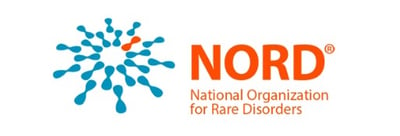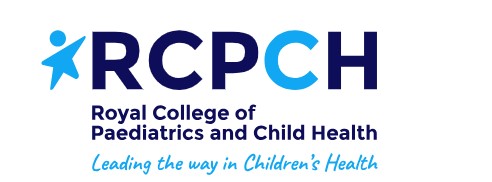About Retinopathy of Prematurity
Retinopathy of Prematurity (ROP) is an eye condition that affects thousands of premature infants each year, making it a subject of concern for parents and healthcare professionals alike. In this blog, we will explore what ROP is, the symptoms, diagnosis and treatment available, along with the challenges ROP may present. We also share further information on places to obtain support, information and advice about Retinopathy of Prematurity.
We will also explore the ways in which assistive technology can help with everyday life, with education and in the workplace for people with sight loss
What is Retinopathy of Prematurity (ROP)?
Retinopathy of Prematurity (ROP) is a rare medical condition that primarily affects premature infants. It is more likely to occur in babies born before 31 weeks of gestation, with a birthweight of under 1,501 grams. Therefore, babies who meet these two criteria are screened for ROP. In the UK, screening is used to identify incidences of ROP which require treatment to prevent vision loss, where possible.
Retinopathy of Prematurity is a condition that arises due to the incomplete development of blood vessels in the retina. (The retina is the light-sensitive tissue at the back of the eye). After a very premature birth, the blood vessels in the retina can start growing abnormally, which results in ROP.
“When ROP develops, babies do not feel pain [in their eyes] or look different to you”
American Association for Pediatric Ophthalmology and Strabismus
In mild cases of ROP, the baby’s eyes and vision may not be affected. In more severe cases, the baby may develop problems such as short-sightedness or a squint as they go through childhood. They may need to wear glasses during childhood and beyond. In rare, severe cases, which go untreated, the retina may detach, which results in sight loss.
Retinopathy of Prematurity is found in 60% of babies weighing less than 1501 grams.
In most of these cases, the ROP is mild and will get better by itself. For around 5% of very premature babies, there is a risk it may develop into severe ROP, which can lead to partial or total sight loss.
While sight loss through Retinopathy of Prematurity can pose challenges, it's essential to recognise that it doesn't define an individual's entire life. In the UK, as in many parts of the world, early diagnosis and intervention play pivotal roles in managing ROP effectively.
Symptoms of Retinopathy of Prematurity
There are no obvious symptoms of ROP, which is why screening is so important. The majority of symptoms happen inside the eye, so only an ophthalmologist trained to recognise and treat ROP will notice the signs, through examinations of the infant's retina.
If complications have occurred, a baby with ROP might develop recognisable complications, such as white pupils (leukocoria) or erratic eye movements (nystagmus), though these are also symptoms of other vision impairments and not exclusive to ROP. Always consult an ophthalmologist immediately if you recognise these symptoms in your child.
It is important to note that only a very small percentage of babies with ROP go on to develop a vision impairment.
Retinopathy of Prematurity Statistics for USA
- 3.9 million infants are born in the USA each year, around 14,000 of these develop ROP
- 90% of those with Retinopathy of Prematurity have only mild disease
- About 1,100 to 1,500 infants develop ROP severe enough to need medical treatment
- 400-600 infants each year in the US become legally blind from ROP
Source: American Association for Pediatric Ophthalmology and Strabismus
Diagnosis of Retinopathy of Prematurity
If a baby is deemed at risk of developing ROP, they will be given regular (weekly or fortnightly) screenings to check for any abnormalities in the development of the eye. It is really important to keep these regular appointments, even after your baby has been discharged from hospital. Only an ophthalmologist (specialist eye doctor) can perform these tests.
Your baby will be given eye drops to dilate their pupils.
Every part of the baby's eye will be examined, with particular attention to the retina. Equipment commonly used by ophthalmologists for these tests include:
- An ophthalmoscope - this allows the ophthalmologist to see inside the eye and examine the retinas.
- An indentor - used by ophthalmologists to press on the eyeball
- A RetCam - a specialist camera, sometimes used to take pictures of the retina for further investigation.
Screenings and examinations will continue every one or two weeks to check for any development of ROP, to determine if the baby needs any follow up care or treatment. If a baby develops severe ROP, they may need ongoing appointments until the age of around five years old. With regular screening and treatment, it is very rare for children to experience a vision impairment or loss of vision.
Treatment of Retinopathy of Prematurity
The majority of cases of Retinopathy of Prematurity are mild and will get better without treatment. Though screening by an ophthalmologist for all at-risk babies is still very important. For some babies with ROP, treatment may be needed to prevent the condition worsening.
If treatment is needed, these are some of the options which may be used:
Laser Treatment
Babies with more advanced ROP may need laser treatment on the sides of the retina. A later This treatment can help keep ROP from getting worse and help protect your child’s vision.
Injections
Doctors may inject medicine known as anti-VEGF drugs into the baby's eye. These block the growth of blood vessels.
Eye Surgery
For babies with partially or completely detached retinas, surgeons may perform:
- Scleral buckle surgery: A flexible band is placed around the sclera (the white part of the eye). This band supports the detached retina until the eye starts growing normally, after which the band is removed.
- Vitrectomy: During surgery, small openings are made in the eye wall to remove most of the vitreous (the gel-like fluid that fills the eye) and replace it with a saline solution. The scar tissue on the retina is then surgically removed. During this surgery, laser treatment to treat the retina and seal it in position may also take place.
Source: National Eye Institute article
Assistive technology for people who are blind or partially sighted.
Assistive technology plays a pivotal role in empowering individuals with visual impairments, including those with ROP. From accessible book readers to full screen readers, innovative digital tools bridge the gap between limitation and possibility, enabling independence and access to information.
Screen reading technology
Screen readers are a gateway to the digital world for people with sight loss. A screen reader converts on-screen text and other elements into synthesised speech or Braille output, so it can be read independently - either by listening to the text-to-speech audio, or by reading on an electronic braille reader.
Screen Reading technology is important for independence. It enables people with Retinopathy of Prematurity or other visual impairments to:
-
Access educational materials, to read, learn and thrive at school and throughout higher education
-
Access information and computer programmes, to excel in their careers.
-
Connect with friends and family through social media and messaging platforms.
-
Enjoy literature and read independently, through audiobooks and accessible e-books.
-
Stay informed by reading news articles and websites.
-
Participate in online communities and forums, sharing experiences and knowledge.
Sophie, an artist with ROP, remarks, "With my screen reader, I can explore art-related forums, learn new techniques, and share my creations with others. It's a bridge to the wider world of art and creativity."
Screen readers such as Dolphin SuperNova are invaluable companions for individuals with ROP. They provide access to a wealth of information, entertainment, and opportunities. Screen readers ensure that visual impairment doesn't limit people who are blind or partially sighted to engage with others in digital formats.
Living with Retinopathy of Prematurity
For many individuals with Retinopathy of Prematurity, the journey begins with a diagnosis during infancy. However, the path forward is as unique as each person affected. The outcomes vary from those with no lasting vision issues to others who may have significant visual impairment.
Retinopathy of Prematurity may bring challenges to individuals and to families, but it also fosters resilience, determination, and a sense of community among those who experience this sight condition.
In the UK and around the world, individuals who have lost their sight because of ROP have demonstrated that visual impairment does not define their abilities or their potential. With the support of assistive technology such as screen readers, they are able to break through barriers and engage with opportunities the digital space provides.
Using assistive technology enables people with sight loss caused by ROP to achieve academic success, work in fulfilling roles throughout their careers and retain independence and autonomy.
Sources of further information and support for Retinopathy of Prematurity
Please note that this article offers information only.
While the information on this page has been gathered reputible sources, which have been cited, it is not a replacement for clinical advice. If you have any questions regarding Retinopathy of Prematurity, or any other eye condition, please consult a medical professional.

Leaflet from Gread Ormond Street Hospital (GOSH) on Retinopathy of Prematurity

Support and advice for living with sight loss from Royal National Institute for Blind People (RNIB)

In the USA, National Organization for Rare Disorders (NORD) offers advice, information and support


The National Eye Institute offers information and updates on research



Let Us Know What You Thought about this Post.
Write your comment below.